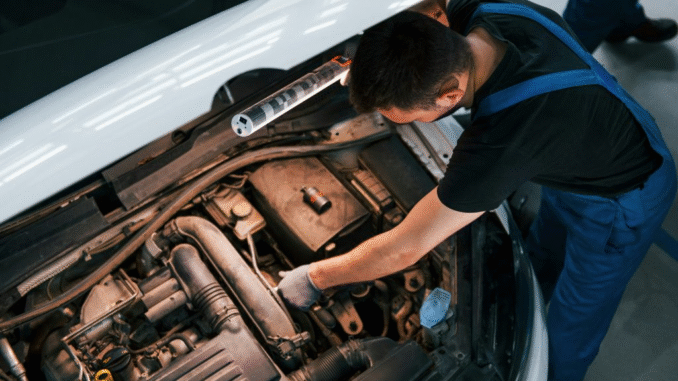
Top Car Maintenance Tips to Keep Your Vehicle Running Smoothly
Owning a car brings convenience, flexibility, and independence, but it also comes with the responsibility of maintenance. Regular upkeep doesn’t just prolong the life of your vehicle—it enhances performance, improves safety, and can save you from expensive repairs down the line. Whether you’re a new car owner or a seasoned driver, understanding the basics of car maintenance is essential to keeping your ride running smoothly.
This guide covers the top car maintenance tips every driver should follow to ensure their vehicle stays in optimal condition year-round.
1. Follow the Manufacturer’s Maintenance Schedule
Your vehicle’s owner manual is your most reliable source of maintenance information. It provides specific service intervals for oil changes, filter replacements, brake inspections, and more.
Why it matters:
Each vehicle has unique requirements based on its make and model. Following the recommended schedule keeps warranties valid and ensures your vehicle receives care when it needs it.
Pro Tip:
Set reminders on your phone or use vehicle maintenance apps to track service intervals.
2. Check and Change Your Oil Regularly
Oil is the lifeblood of your engine, lubricating moving parts and reducing friction. Over time, oil breaks down and becomes less effective.
How often?
Typically every 3,000 to 7,500 miles depending on your car and oil type.
How to check it:
- Park on level ground.
- Turn off the engine and wait a few minutes.
- Use the dipstick to check oil level and color.
- If it’s low or looks dirty, it’s time to top up or change.
Tip:
Use synthetic oil for better performance and longevity, especially in extreme temperatures.
3. Inspect Tires and Maintain Proper Pressure
Tires play a critical role in safety, fuel economy, and ride comfort. Underinflated or overinflated tires wear unevenly and can affect braking and handling.
What to do:
- Check tire pressure monthly using a gauge.
- Inflate tires to the manufacturer’s recommended PSI (usually found on the driver’s side door or in the manual).
- Look for signs of wear, cracks, or punctures.
Don’t forget:
Rotate your tires every 5,000–8,000 miles to ensure even wear and extend lifespan.
4. Keep an Eye on Fluid Levels
In addition to engine oil, your car relies on several other essential fluids:
- Coolant (Antifreeze): Prevents overheating.
- Transmission fluid: Keeps gear shifts smooth.
- Brake fluid: Ensures responsive braking.
- Power steering fluid: Helps you steer effortlessly.
- Windshield washer fluid: Keeps your vision clear.
Maintenance Tip:
Check fluids every few months and top up as needed. If levels drop suddenly, it could indicate a leak.
5. Replace Air Filters Regularly
Your car has two main air filters: the engine air filter and the cabin air filter. Both play vital roles:
- Engine air filter: Prevents debris from entering the engine.
- Cabin air filter: Keeps the air inside the car clean and breathable.
When to change:
- Engine filter: Every 15,000 to 30,000 miles.
- Cabin filter: Every 12,000 to 15,000 miles or once a year.
Sign of clogging:
Reduced engine performance, poor fuel economy, and foul odors inside the cabin.
6. Test Your Battery
Car batteries typically last 3–5 years, but extreme temperatures and lack of use can shorten their life.
Maintenance steps:
- Inspect battery terminals for corrosion.
- Make sure it’s securely mounted.
- Test voltage with a multimeter or have it checked at a service center.
Warning signs of a failing battery:
- Slow engine crank
- Dim lights
- Dashboard battery warning light
Tip:
If your battery is nearing the 3-year mark, have it tested annually.
7. Check Brake Pads and Rotors
Your brake system is critical for safety. Worn brake pads can damage rotors and increase stopping distance.
Look out for:
- Squealing or grinding noises
- Vibration while braking
- Brake warning lights
Maintenance tip:
Have your brakes inspected at least once a year or if you notice performance issues. Replace pads typically every 25,000 to 70,000 miles, depending on driving habits.
8. Maintain the Cooling System
Your engine generates a lot of heat. The cooling system—radiator, hoses, coolant—prevents it from overheating.
Key tips:
- Flush the coolant every 30,000 miles or as specified by your manufacturer.
- Inspect hoses for cracks, leaks, or swelling.
Overheating risks:
Driving with an overheated engine can cause permanent damage and lead to costly repairs.
9. Keep Your Car Clean Inside and Out
A clean car not only looks good but also resists rust, corrosion, and wear.
Exterior tips:
- Wash regularly, especially in winter to remove salt.
- Wax every few months to protect the paint.
Interior tips:
- Vacuum carpets and seats.
- Use protectants on the dashboard and trim.
- Clean out vents to avoid dust buildup.
Bonus:
Regular cleaning preserves your car’s resale value.
10. Pay Attention to Warning Lights
Modern vehicles are equipped with dashboard indicators that monitor various systems. Don’t ignore warning lights like:
- Check engine light
- ABS (anti-lock braking system) warning
- Oil pressure light
- Battery alert
If a light comes on:
Check your manual to understand its meaning and act quickly. Some alerts indicate minor issues, while others signal major problems needing immediate attention.
11. Replace Windshield Wipers Annually
Good visibility is crucial, especially during rain or snow. Worn wipers can leave streaks or miss large areas.
Signs it’s time to replace:
- Skipping or squeaking
- Streaky glass
- Cracked or torn blades
Tip:
Change wipers every 6–12 months or as soon as they start to underperform.
12. Listen and Feel for Unusual Changes
Often, your senses will be your first line of defense. Pay attention to:
- Strange noises (knocking, grinding, squealing)
- Vibrations
- Changes in acceleration, braking, or steering
React promptly:
Ignoring small issues can allow them to develop into larger—and costlier—repairs.
13. Drive Responsibly
Your driving habits have a direct impact on your car’s lifespan.
Good habits include:
- Accelerate and brake gently.
- Avoid potholes and rough terrain.
- Don’t overload your vehicle.
- Let the engine warm up in cold weather.
Fuel-saving tip:
Avoid rapid acceleration and idling for long periods.
Final Thoughts
Keeping your car running smoothly isn’t complicated—it just takes consistency and attention to detail. By following these maintenance tips, you’ll not only ensure a safer and more reliable driving experience but also extend the life of your vehicle and potentially save thousands in repair costs over time.
Remember, prevention is always better than cure when it comes to car care. So be proactive, stay informed, and give your vehicle the attention it deserves.

